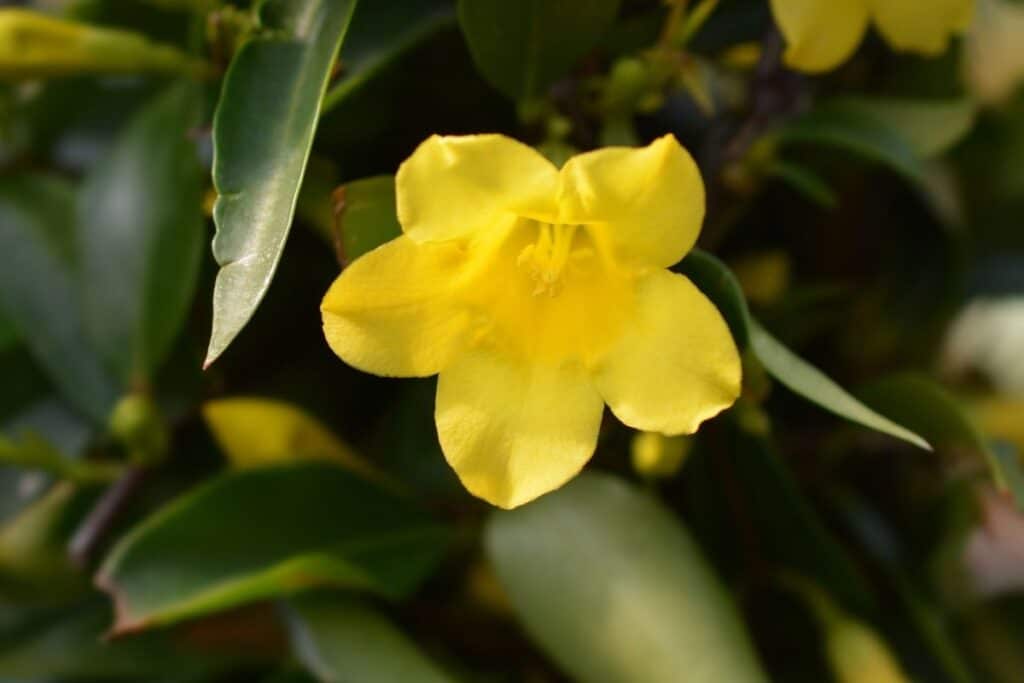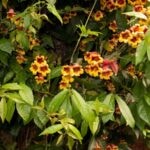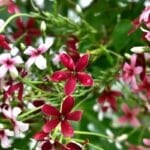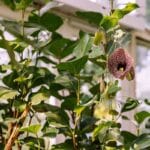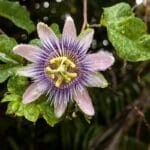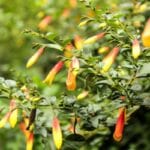The State flower of South Carolina, Carolina jasmine, yields charismatic yellow flowers and waxy leaves that grow competently. It is a beginner-friendly vine because it is a low-maintenance plant.
However, there is the potential harm that comes with this vine’s artistry as a poisonous plant.
Botanical Information
The Carolina jasmine goes by the scientific name Gelsemium sempervirens and is classified under the small family of Gelsemiaceae. Their family was formerly under the Loganiaceae but was given their own family with 2 genus and 11 species under.
Some of the common names this vine goes by are yellow jessamine, Carolina jessamine, Carolina yellow jessamine, poor man’s rope, evening trumpetflower, and false jasmine.
Its scientific name gives people an idea of what this plant entails. Its genus came from an Italian word, Gelsomino, which translates to Jasmine. On the other hand, its species, sempervirens, translates to evergreen.
People are often misled by the appearance of Carolina jasmine and Honeysuckle vines. The latter differs by having wider leaves and different floral morphology. During the young stages of G. sempervirens, some of its look-alikes are the winter creeper (Euonymus fortunei) and Periwinkle (Vinca minor).
However, the winter creeper is characterized by having serrated leaves and Periwinkle has purple flowers, rounded leaves, shorter stems, and serves as a bush plant rather than a vine.
Spatial Distribution
In terms of natural habitat, the Carolina Jessamine is a native from South Guatemala, Arkansas, West Florida, East Texas, and Carolina. When left to its natural environments, this vine chose to grow in abandoned fields, spotted climbing trees dead or alive.
Given its preferred environmental conditions, this plant is suitable to grow in USDA Zones 7 to 10.
Growth Habits
One of the reasons why the Carolina Jessamine is a good choice for a flowering vine in a landscape is because of its growth habit.
Despite being a resilient and unfastidious vine, it is a moderate grower, which lessens the need for frequent maintenance activity and lowers the risk of harming existing plants around it.
Also, this vine is flexible as it can twine around structures or grow as a dense groundcover. As an evergreen plant, its leaves are always showing, which makes it a good cover or screen.
Having the hints of reddish-brown from the vines stems and the dark green color of the leaves brings the aesthetic factor to the landscape.
Leaves
The evergreen vine bears green glossy leaves, which are oval and tapered on both ends, oppositely attached to succulent red-brown twining stems. As winter comes, the leaves turn brown to purplish-brown.

Carolina Jessamine Flowers
As the main attraction this vine offers, its flowers are royal yellow trumpet shaped flowers that extend up to 1.5 inches long arranged in small clumps. This vine’s spectacular flower show is often seen from February through May.
Fruit and Seeds
After producing eye-catching hermaphrodite blooms, pollinators come to play for the plant to produce fruits and seeds for reproduction. Flat and splitting pods are then produced during the fruit set. Seeds are dispersed mainly through air, birds, and insects.
Grow and Care Tips
Sun Requirement
The Carolina Jessamine vine thrives under full sun and partial shade. It flowers in both situations, but better blooms are seen when the plant is given an interrupted 6-hour long exposure to full sunlight.
Water Requirement
Having a moist growing environment is highly favorable for the growth of Carolina Jessamine. Hence, the application of moderate amounts of water frequently is recommended.
Temperature and Humidity
As a sun-loving vine, this plant loves to be planted in a warm environment.
Soil Requirement
Being a non-picky perennial, the Carolina jasmine vine flourishes when planted in damp but well-drained soil with enough organic matter. Some of the types of soil it prefers are the clay, loam, sandy, clay loam, and sandy loam soils.
Also, this vine favors acidic to slightly basic soil pH ranging from pH 5.5 to 7.2.
Fertilizer Requirement
As long as the planting medium is rich in organic matter, applying fertilizer is not necessary.
However, the application of complete fertilizer may be done twice annually to ensure that the nutrients in the soil are replenished. In early spring, apply a balanced, slow-release fertilizer. Avoid applying nitrogen-rich fertilizers before flowering because it will promote more foliage growth and will inhibit flowering.
The application of phosphorus-rich fertilizers will be helpful in the optimization of flower production. In general, applying fertilizers are recommended on the product label.
Maintenance Activities
The Carolina jasmine vines can take care of its own once it is established in the landscape.
Aside from the available soil, another limiting factor for a twining vine is the supporting structures that will expand the vertical space for the plant to grow.
Providing adequate and sturdy supporting materials such as fences and trellises will help the vine grow freely and bloom.
Another maintenance activity to be done is pruning, especially after flowering. In doing so, the vine is replenished and will produce better blossoms in the following seasons.
Moreover, regular removal of dead plant parts is important to ensure the plant’s health, as this lessens its susceptibility to diseases. Remember to clean all equipment used in maintenance to avoid the accidental spread of plant pathogens.
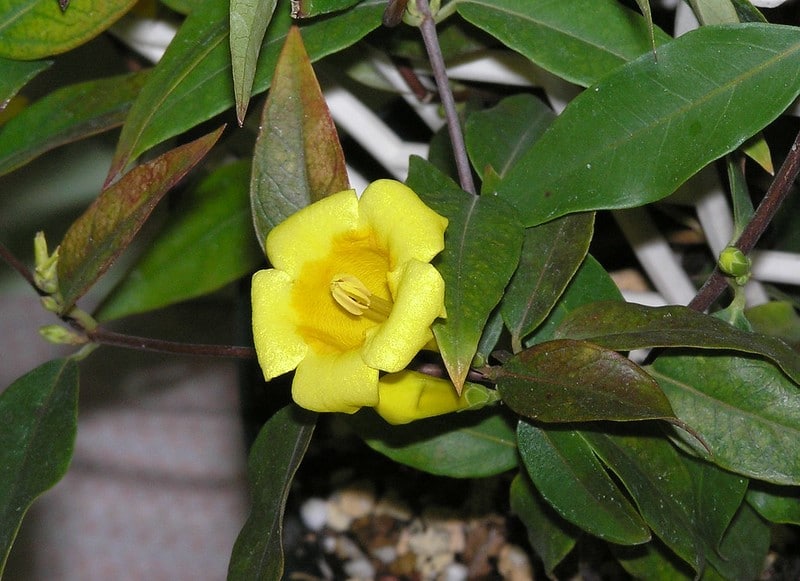
Propagation
Propagating Carolina Jasmine (Gelsemium sempervirens) can be done through various methods, with the most common being stem cuttings. In late spring or early summer, select a healthy stem with several nodes, and make a clean cut below a leaf node. Remove any leaves from the lower part of the cutting to expose the nodes.
Dip the cut end in rooting hormone to encourage root development. Plant the cutting in a well-draining soil mix, ensuring it stays consistently moist. Place the container in a warm, bright location but shielded from direct sunlight.
With proper care, the cutting should root within a few weeks, and once established, it can be transplanted into the desired garden location.
Function in the Landscape
This versatile vine provides function and glamour, making it ideal for growing plants in various settings. Thanks to its crawling habit, it is trained to twine and cling to arbors, trellises, and fences to serve as a screen or green wall, making it a good plant to incorporate into vertical landscaping.
Also, this serves as a beautiful foundation plant that will soften concrete structures in the landscape. This vine may also serve as a mounding ground cover, making a carpet-like appearance with beautiful bright yellow flowers.
The grandeur of the Carolina jasmine does not only entice landscape users but also wildlife, such as hummingbirds and insects.
Potential Harm
Despite the charm of the Carolina Jessamine, keeping an eye on this plant will help prevent potential harm to the users. Skin contact with this plant’s sap will result in dermal irritations.
Furthermore, ingesting different plant parts such as leaves, flowers, and roots will result in poisoning.
Make sure to keep pets and children away from this plant. Even its nectar is toxic to honeybees, which may impose harm in consuming honey produced by the bees who frolic around this plant often.
FAQs
Does Carolina Jasmine smell good?
Yes, Carolina Jasmine (Gelsemium sempervirens) is known for its delightful fragrance. The yellow, tubular flowers emit a sweet and pleasant scent, making it a fragrant addition to gardens and landscapes.
Where does Carolina jasmine grow best?
Carolina Jasmine (Gelsemium sempervirens) grows best in well-drained soil and thrives in full sun to light shade. Native to the southeastern United States, it flourishes in a variety of landscapes, from woodlands and meadows to garden spaces, particularly in regions with a mild climate.
*Image by nahhan/depositphotos

